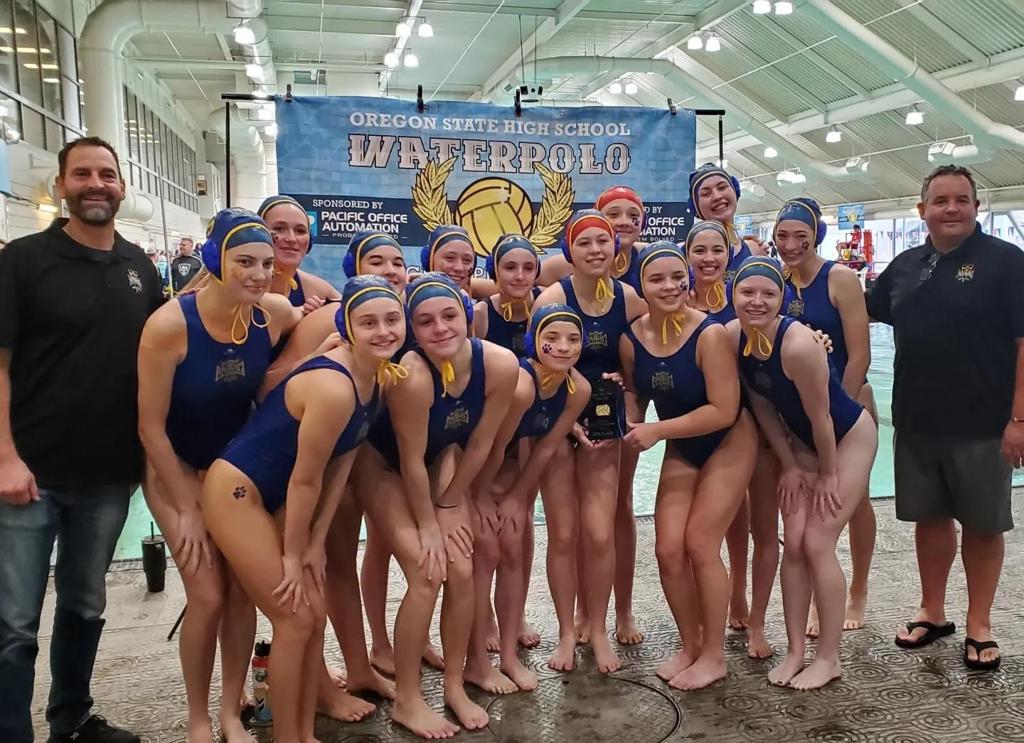NIL
College football spring games face uncertain future in NIL era
US LBM Coaches Poll: Ohio State claims top spot after national title run See where your team landed in the final US LBM Coaches Poll ranking of the year. Sports Pulse While college football adopted offseason workouts not long after Rutgers beat Princeton — Harvard claims to have conducted the first out-of-season practice on March 14, […]
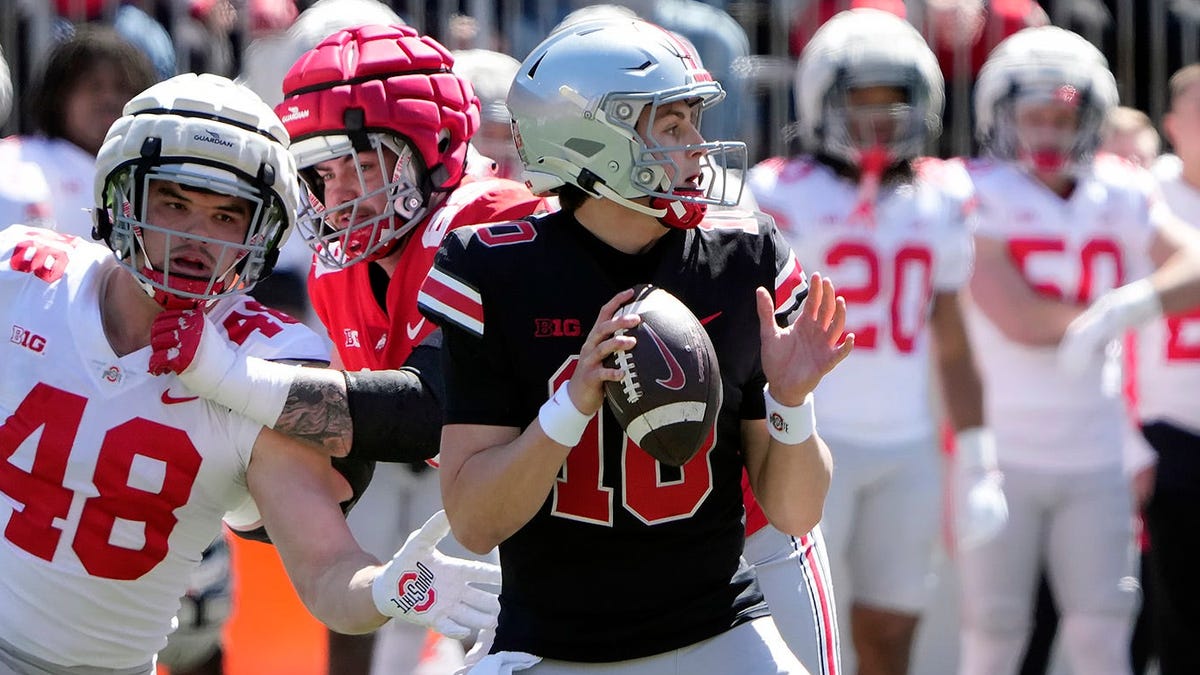
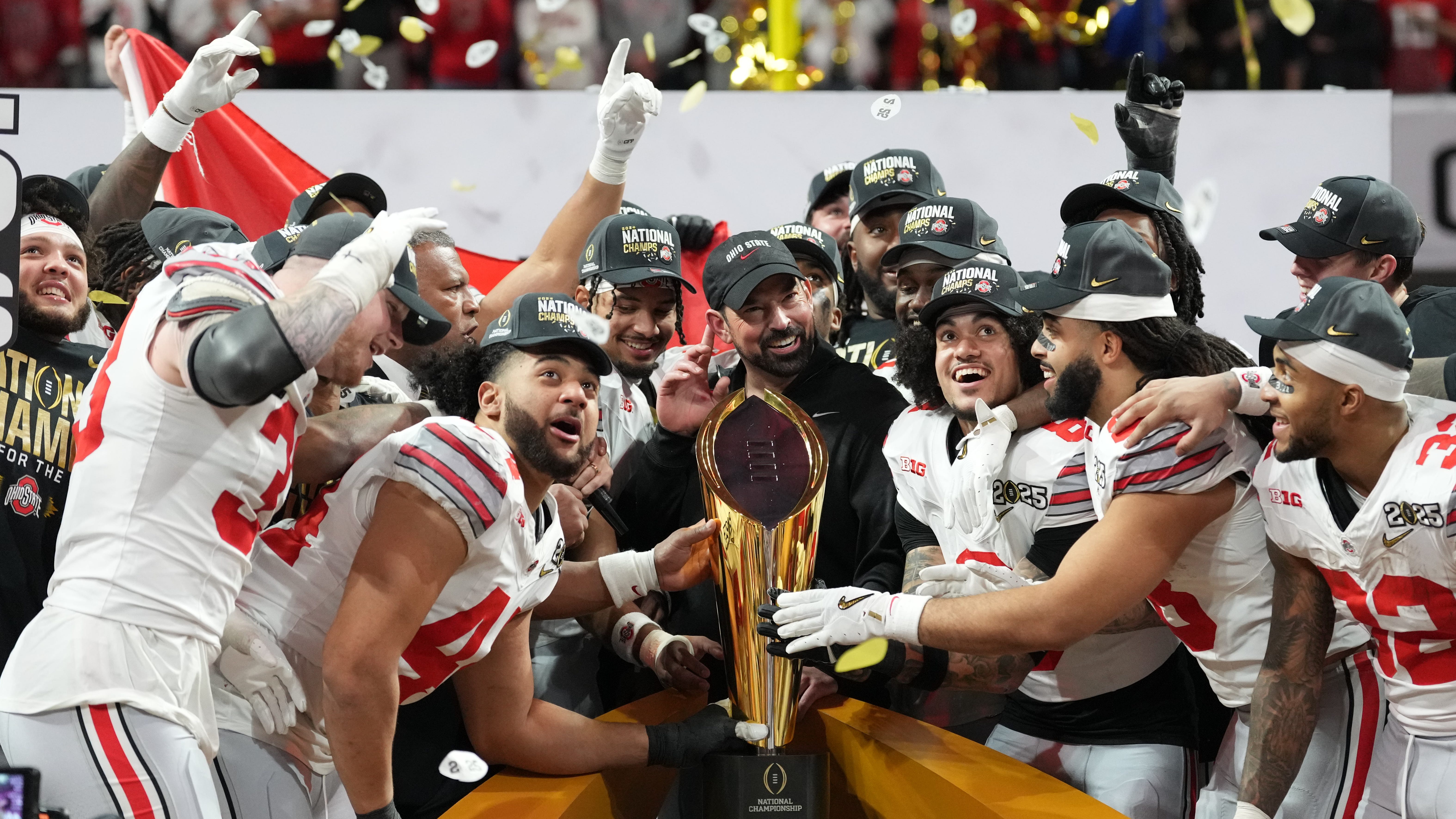
US LBM Coaches Poll: Ohio State claims top spot after national title run
See where your team landed in the final US LBM Coaches Poll ranking of the year.
Sports Pulse
While college football adopted offseason workouts not long after Rutgers beat Princeton — Harvard claims to have conducted the first out-of-season practice on March 14, 1889 — the spring game truly flourished this century, as programs began to stage largescale recruiting spectacles around what had evolved into one of the tentpole events on the sport’s annual calendar.
Steadily, the traditional end-of-spring scrimmage began to adopt a far less essential on-field purpose. One contributing factor was the increase in overall interest in these showcases. In response to ESPN and conference-branded networks starting to broadcast dozens of games every spring, many programs opted for an overly narrow glimpse at personnel and the playbook so as not to provide any insight for opponents on that season’s schedule.
That represented a deviation from the spring game’s original intent: to provide a game-like atmosphere as a way to evaluate a larger roster and specific position-by-position competitions.
Now, amid similar concerns stemming from dramatic changes to the NCAA model, spring games are approaching the territory of leather helmets, wishbone offenses and the four-team playoff — former college football hallmarks that have drifted into antiquity.
“What I think is happening with spring games is a consequence of what is happening in college football in general,” said Baylor coach Dave Aranda.
Conventional spring games have gone from a luxury to a liability because of NIL and the transfer portal, which have combined to turn roster management and retention into a free-for-all frenzy. With very little to gain but much to lose by mirroring a realistic game-day environment, many coaches who once embraced the positives of the spring showcase have shifted toward a closed-door approach as a way to combat widespread player movement.
“There’s more potential downside than upside for us,” said SMU coach Rhett Lashlee.
Said Illinois coach Bret Bielema, “I always worry about outside voices. I’m not oblivious to the fact that our guys were probably contacted by college programs that want their services.”
Twenty-five Power Four teams have decided against the traditional spring scrimmage, including nearly half of the Big Ten. Among the programs opting for something more closely resembling a practice-like setting are Nebraska, Florida State, Southern California, Oklahoma, LSU and Texas.
The reasoning is simple: Coaches and programs have become openly wary of having their rosters poached by teams that see potential contributors on tape and, because of NIL enticements and the ease of the portal, have the wherewithal to sway players through unofficial channels.
“The word ‘tampering’ doesn’t exist anymore,” Nebraska coach Matt Rhule said. “It’s just an absolute free, open, common market. I don’t necessarily want to open up to the outside world and have people watch our guys and say, ‘He looks like a pretty good player. Let’s go get him.’
“Honestly, to me, it’s about protecting the roster and protecting through that portal period.”
This weekend is the final weekend where a significant portion of the Power Four schools will wrap up spring practice and look toward offseason preparations.
Texas coach Steve Sarkisian said the Longhorns will conduct NFL-style training sessions in lieu of a normal game. Arizona State is more focused on situational gameplay such as red-zone offense, coach Kenny Dillingham said. Nebraska will hold skills competitions and 7-on-7 games involving current and former players, among other events, and then a scrimmage featuring backup players battling for spots on the Cornhuskers’ roster.
Concerns that holding a spring game could influence roster makeup isn’t reserved for the Power Four. While major-conference teams might worry about the loss of depth and young talent not quite ready for larger roles, those on the Group of Five fear that starting-caliber players could be lured away by programs with much deeper pockets and ample NIL offerings.
“My primary intent is both to protect and retain our current roster and to keep our schemes and strategies unknown from our opponents for as long as possible,” Utah State coach Bronco Mendenhall said in announcing the Aggies will not hold a spring game and will close all spring practices to the public.
Overall, thousands of players have entered the portal since the first transfer window opened in December. The spring window closes on Friday, though players are only required to enter the portal during this period in order to be immediately eligible this season.
Canceling these spring games may have a minimal impact on the overwhelming amount of roster turnover every Bowl Subdivision program has encountered since the portal and NIL legislation went into effect earlier this decade.
“Listen, whether you have a spring game or not, it’s going to be tampering,” Clemson coach Dabo Swinney said.
A largely unregulated landscape has been intensified by the potentially seven-figure payouts handed out to college football’s best players at key positions such as quarterback, to the point where even starters at high-profile programs are evaluating their options in advance of the expected House settlement that will set an annual cap on athletics department spending on NIL.
In the most glaring example, former Tennessee quarterback Nico Iamaleava decided to transfer this month amid a dispute over his NIL contract. But Iamaleava’s departure for UCLA came before the Volunteers’ spring game; there was already plenty of tape establishing the sophomore as one of the most promising young passers in the FBS.
“People are going to tamper with our players whether we like it or not,” Sarkisian said. “That’s fine. Hopefully, we’ve built a culture and they believe in the development of the other guys before them in the program and feel this is the best place for them.”
Yet many programs have stayed the course and closed spring drills with an intrasquad scrimmage, accepting the tradeoff between the clear positives behind conducting a game-like setting — player development and the chance to evaluate the competition for a starring role — and the potential fallout of losing players into the portal.
“We have enough players that will benefit from the work that we think that offsets any of the other implications,” Utah coach Kyle Whittingham said. “You can’t be scared to do everything. We have to get guys better. That’s our number one objective.”
Even as these holdouts cling to tradition, the concept of a realistic, game-like scrimmage to close spring practices seems destined to be replaced by either modified jamborees or, as with the Longhorns, types of offseason training sessions designed to maximize development away from prying eyes.
One option raised this spring by Colorado coach Deion Sanders was a controlled scrimmage between two teams, which would mirror the NFL model. While Sanders’ call for an opponent was answered by Syracuse coach Fran Brown, the waiver was denied by the FBS oversight committee.
“Under current NCAA Bylaws, teams cannot play another school in the spring,” an NCAA spokesperson told USA TODAY Sports.
With no ready solution for balancing the need for development with the chance of largescale player movement, traditional spring games face an increasingly high likelihood of being erased from the college football schedule.
“To each his own,” said Florida coach Billy Napier. “I’m either going to have coaches tampering with my players, or I’m going to have a fanbase that’s pissed off at not having a spring game. It’s pick your poison.”
NIL
Mocs Bring the Rain with Four Home Runs at ETSU
Next Game: at East Tennessee State 5/4/2025 | 1:00 p.m. May. 04 (Sun) / 1:00 p.m. at East Tennessee State History JOHNSON CITY, Tenn. — The rain held off long enough Saturday in Johnson City to play the game, but the Chattanooga softball team brought a little of its own, […]
JOHNSON CITY, Tenn. — The rain held off long enough Saturday in Johnson City to play the game, but the Chattanooga softball team brought a little of its own, raining down four home runs to beat ETSU 7-2 in Southern Conference action.
With the Mocs trailing 1-0 in the fourth, Baileigh Pitts put a first-pitch shot over the fence in left field to give UTC a 2-0 lead. Acelynn Sellers led off the inning with a double and pinch runner Abi Pikas scored on the homer.
In the fifth, Chattanooga added a third run. Kailey Snell reached on a double and advanced to third on a single by pinch hitter Presley Williamson. Camryn Cernuto reentered to run the bases and was caught stealing. However, that opened up the chance for Snell to score from third and UTC was up 3-1. It was the first time Cernuto was caught this season.
Pitts led off the sixth with a single through the left side. With two outs, freshman Mia Leone stepped up to the plate to pinch hit. She didn’t wait long to get her first collegiate home run. Leone took the first pitch well out of the park clearing the fence in left field and down the hill adding two more runs for Chattanooga.
In the seventh, the Mocs decided to shake it up. Olivia Lipari led off with a home run to left and Acelynn Sellers took a cue from her and the duo went back-to-back to make it a 7-2 advantage.
The Bucs picked up their first run, scoring on a double into the gap in left center. The second was a solo home run in the sixth.
Peja Goold struck out seven and improved to 23-5 on the year. She takes sole possession of seventh on the single-season wins list.
Pitts was 3-for-4 with a home run and two RBI. Leone was 1-for-1 with a homer and a pair of runs batted in. Sellers was 2-for-4 with a home run, a double and an RBI.
The Mocs improved to 38-12 overall and 14-4 in SoCon play. ETSU dropped to 16-34 on the season and 5-14 against the league.
• The last time UTC had four home runs in a single game was earlier this season against IU Indy in the Frost Classic. The Mocs won 9-8.
• The last time the Mocs had back-to-back home runs was in the 2024 SoCon Championship game by Kaili Phillips and Addy Keylon.
FOLLOW CHATTANOOGA SOFTBALL
For the most up-to-date information and news regarding Chattanooga Softball, please follow @GoMocsSB on Twitter & Instagram and ChattanoogaSB on Facebook.
NIL
Shedeur Sanders’ Wants To Build Colorado Buffaloes Into ‘Super Team’ With NIL
During the 2024 season, after a dominant 52–0 win over Oklahoma State, former Colorado Buffaloes quarterback Shedeur Sanders casually dropped a headline-making comment while addressing the media: “Imma donate to the collective for sure,” Sanders said with a grin. “I’ll make sure we have a super team next year!” While the line initially came off […]
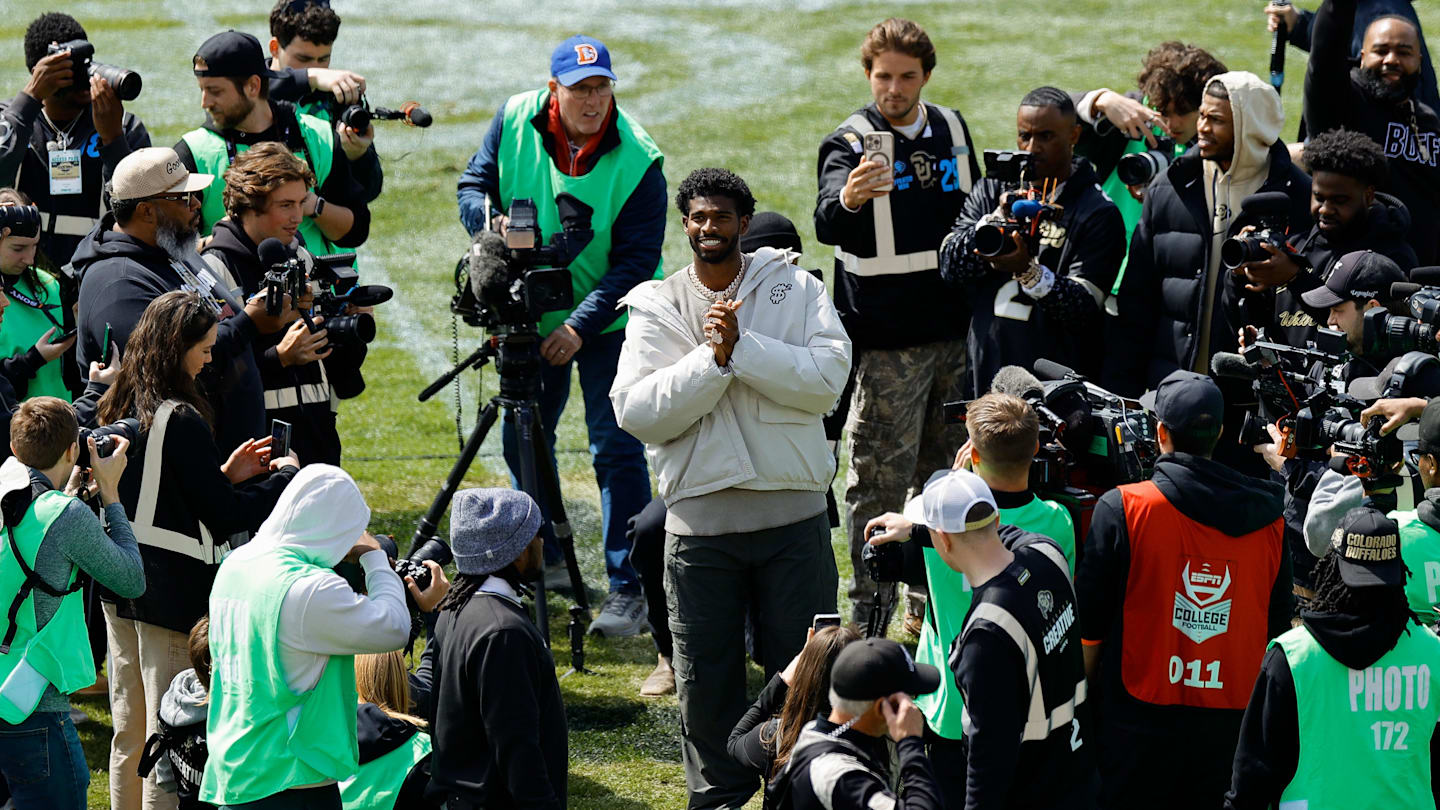
During the 2024 season, after a dominant 52–0 win over Oklahoma State, former Colorado Buffaloes quarterback Shedeur Sanders casually dropped a headline-making comment while addressing the media: “Imma donate to the collective for sure,” Sanders said with a grin. “I’ll make sure we have a super team next year!”
While the line initially came off as classic Shedeur confidence, its meaning gained new life recently when his brother, former Colorado safety Shilo Sanders, hinted that Shedeur had seriously considered putting that plan into motion. In a recent candid moment provided by Overtime SZN, Shilo revealed that had his brother been taken in the first round of the 2025 NFL Draft, a portion of that NFL paycheck was likely headed straight back to Boulder for Name, Image, and Likeness (NIL) deals.
“If we would have went first round,” Shilo said laughingly. “He would have actually took that. He had some plans for the whole team. He was gonna have his whole NIL Collective.”
Though Shedeur ultimately wasn’t a first-round selection, his presence in Boulder left a lasting mark. Alongside Shilo and their father, Colorado coach Deion Sanders, Shedeur helped reshape the identity of Colorado football during one of its most high-profile seasons in recent memory.
His promise to contribute to the Buffaloes’ NIL collective wasn’t just a soundbite—it was a vision.
A vision that, if it had come to life with a first-round payday, could have made an immediate impact. Top picks in the 2025 NFL Draft signed contracts worth as much as $48 million, while even late first-rounders landed deals around the $13 million range.
In contrast, Sanders, being drafted in the fifth round by the Cleveland Browns—will earn an estimated $4.6 million over four years. That gap is worth more than $40 million, giving new weight to his brother Shilo’s recent comments about Shedeur’s plans Colorado regarding NIL. The potential generosity wasn’t just symbolic—it could have been substantial.
MORE: Cleveland Browns Make Kenny Pickett Contract Move After Drafting Shedeur Sanders, Dillon Gabriel
MORE: Deion Sanders’ Former Texas Mansion For Sale For $5.5 Million
MORE: Tom Brady’s Strong Words About Shedeur Sanders ‘Example’ Amid NFL Draft Fall
Still, Shedeur’s financial standing isn’t built solely on the NFL. During his college career, he reportedly earned $6.5 million in NIL deals, working with high-profile brands like Google and Nike. That places him at the forefront of a broader movement—and positions Colorado as an innovator in NIL culture.
In today’s college landscape, where NIL collectives now play a massive role in shaping rosters and retaining top talent, Shedeur’s idea to reinvest NFL money back into his alma mater shows a strategic awareness of the unfolding landscape.
Colorado is quickly becoming a case study in how NIL can be both progressive and personal. Alongside the Heisman Trophy winner and former Colorado cornerback/wide receiver Travis Hunter—who has become one of the most recognizable stars in the NFL—Shedeur represents a new generation of athletes who blend brand building with team building. These players aren’t just signing deals; they’re setting the tone for how NIL can be used to create sustainable success in the future.
Need proof? Well, Sanders currently owns the No. 1–selling rookie jersey since the NFL Draft and has already sold out of his personal merchandise 2Legendary—clear signs of his rising influence on and off the field.
As Shedeur Sanders begins the next chapter of his football journey, his connection to Colorado isn’t fading—it’s evolving. While he’s building new relationships and chasing professional success in Ohio, he hasn’t forgotten the place that helped shape his rise.
Sanders’s vow to give back—regardless of where or when he was drafted—signals a shift in how athletes view their impact. In the new NIL era, Sanders is helping redefine what loyalty looks like.
NIL
Knights Walk-Off Game 1 with Fitzpatrick Grand-Slam, Earn Series Sweep over Skidmore
Potsdam, N.Y.- Double-digits filled the runs column in both games as the Clarkson University Softball team cruised past Skidmore College, 10-0 and 11-3, Saturday afternoon at Scott Field. With the wins Clarkson improves to 22-13, 10-4 in the Liberty League. Having already clinched a playoff berth, the Knights await other results from around the […]
Potsdam, N.Y.- Double-digits filled the runs column in both games as the Clarkson University Softball team cruised past Skidmore College, 10-0 and 11-3, Saturday afternoon at Scott Field.
With the wins Clarkson improves to 22-13, 10-4 in the Liberty League. Having already clinched a playoff berth, the Knights await other results from around the league to determine seeding.
The opening contest of the day was all Golden Knights on the scoreboard. In the bottom of the first, Zoey Kovach connected on a sharp double to the left field gap, scoring Isabel Haspil. The double from Kovach would tie the Clarkson Softball single season record for doubles in a season at 14. In the very next at-bat Devin Fitzpatrick produced a double of her own down the left field line to plate Kovach and take a 2-0 lead.
Fitzpatrick would continue to help her cause on the mound in the bottom of the third, this time blasting a pitch to straightaway center that cleared the fence easily, scoring Kovach again and doubling the advantage. The homer from the senior would tie the Liberty League record of homeruns in a season (13) that had been held since 2015.
Into the bottom of the fourth, Elissa Uveino managed to beat out an infield single to the shortstop, allowing Emma Sabourin to score from third. Another Kovach hit in the ensuing at-bat, this time a single through the left side pushed the lead to 6-0, as Haspil would cross home again.
With the six run lead intact, the Knights would load the bases in the bottom of the sixth with Fitzpatrick stepping up to the plate. Fitzpatrick would foul off two pitches in the at-bat that would have cleared the left-field wall before finally striping a pitch down the middle over the left-center wall, clearing the bases with a walk-off grand slam for game one. The second homer of the game from the senior would give her the new record for Liberty league homers in a season with 14 round-trippers.
Haspil, Kovach and Fitzpatrick would all produce multiple hits for the Knights with Fitzpatrick registering seven RBIs. Fitzpatrick would also go the distance on the mound for Clarkson, striking out seven while allowing just four hits through six innings.
Skidmore would threaten early in the second game, loading the bases with no outs. Bella Hotchkiss, in the circle for the Knights, would go on to force an infield fly and strike out the next two batters to keep the scores level at 0-0. Clarkson broke through with four in the bottom half of the frame as Fitzpatrick, Emily Bulone and Kaya Johnson all drove in runs with Johnson scoring on a wild pitch to end the early scoring.
After Skidmore managed to push one across in the top half of the second, Clarkson would answer with five more. A Kovach single to center, sac fly from Johnson, a draw walk from Elizabeth Greco and another wild pitch would account for the runs as the Knights would lead 9-1 after two.
Clarkson would score another in the second as Genevieve Mucitelli earned an RBI on a fielder’s choice. Another lone Skidmore run in the top of the fourth was matched by the Knights, this time courtesy of a Briget Kerwin single to center pushing the gap to 11-2. A solo homer by Skidmore in the top of the fifth would not be enough to avoid the run-rule, with Amanda Corrice working out of a bases-jammed situation of her own to earn the victory.
Haspil, Kovach, Fitzpatrick and Johnson all managed multiple hits in the nightcap with Johnson and Kovach driving in two runs apiece. Corrice would earn the win coming in for Hotchkiss with the latter going three innings, striking out five and the former tossing two innings in relief.
NIL
Central Michigan University
MUNCIE, Ind. – Team 47 collected their 26th win in the victory over Ball State that opened the series on Saturday afternoon. CMU moves to 26-23 (17-8 MAC) with the split, and Ball State shifts to 31-16 (16-9 MAC). The two teams will face off in the rubber match on Sunday afternoon to fight […]
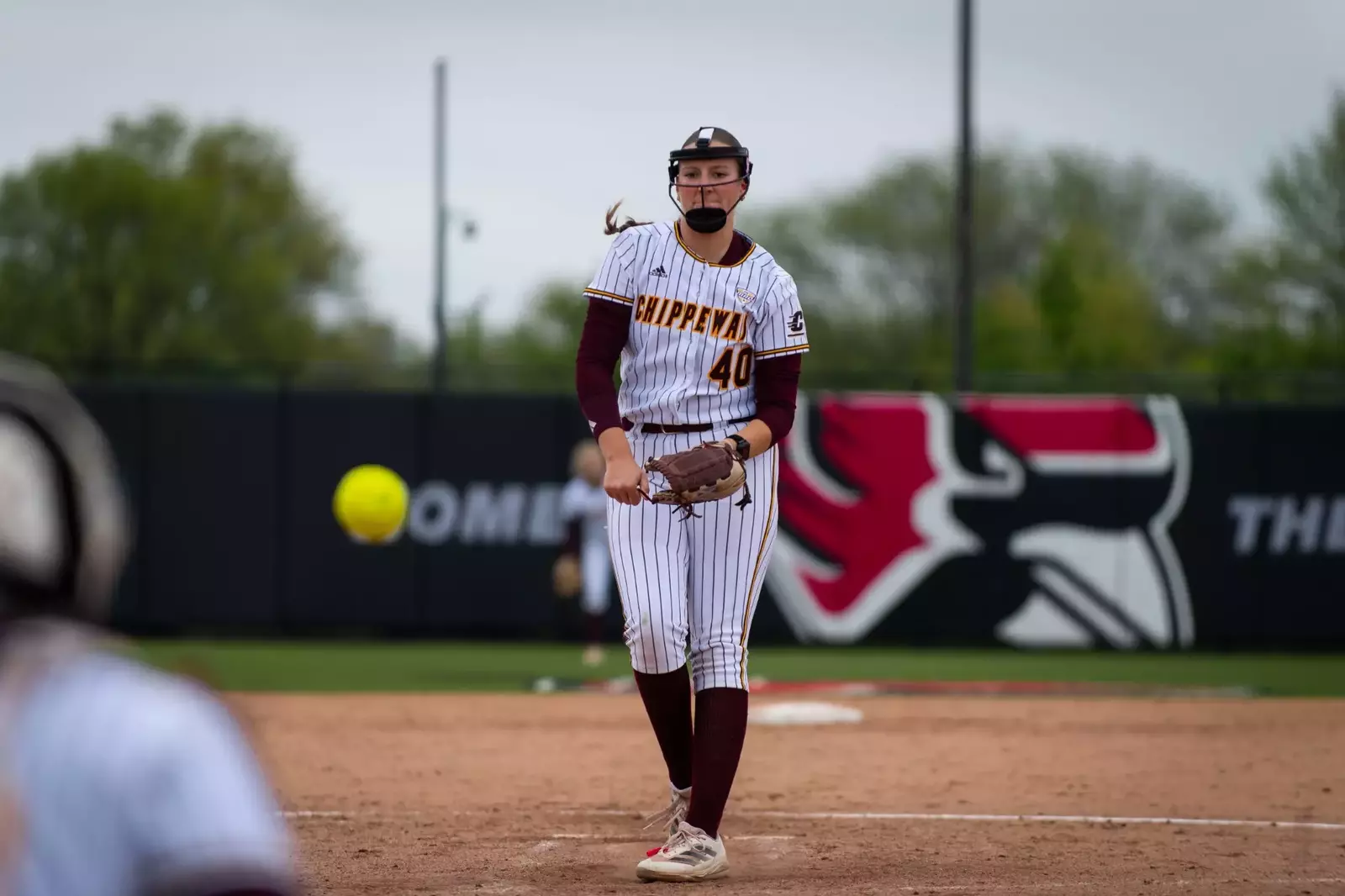
CMU moves to 26-23 (17-8 MAC) with the split, and Ball State shifts to 31-16 (16-9 MAC). The two teams will face off in the rubber match on Sunday afternoon to fight for seeding in the 2025 Mid-American Conference Tournament.
Game 1
Central Michigan Head Coach, McCall Salmon told her team pregame “go cause chaos”, and they did exactly that.
The Chippewas struck for five runs in the top of the first inning on four hits.
Emma Lotus started things off with a single up the middle on the first strike she saw. Lotus advanced to second when London Williams was hit by a pitch and then to third on a failed pick-off attempt by the Ball State catcher.
Allyssa Hollo delivered a double down the right field line on the ninth pitch of her at-bat and plated the first run for CMU in Lotus.
Jenna Kuzara walked, Grace Koenig then doubled and scored Hollo and Williams; 3-0 CMU.
Rachel Cairo singled up the middle to score both Koenig and Kuzara, and the Chippewas gripped the 5-0 lead heading out on defense.
Mackenzie Langan, who threw her 11th complete game of the 2025 season, took the circle for CMU and kept the momentum going with a 1-2-3 inning in the first, second and third innings.
The Chippewas grabbed their final run of the game when Ashley Bila, who pinch ran for Carly Sleeman, crossed the plate. The run was manufactured with London Williams putting the ball in play, and a throwing error by Ball State to move Bila around.
The Cardinals threatened in the bottom of the fourth inning, but a strikeout from Langan stranded runners on second and third as the shutout continued.
Carly Sleeman went 3-4 in the game with a double, Grace Koenig charted two RBI and a double, and Rachel Cairo charted two RBI as well.
Game 2
A different tale for CMU in game two led them to a 0-3 loss to Ball State.
Ball State scored in the bottom of the third inning with an RBI single off Brooklyn Compau who took the start for CMU in the circle.
The Cardinals plated two more runs in the fourth inning with two more RBI singles down both the left and right field lines.
Cierra Laska entered in relief in the fourth, and closed the game for the Chippewas.
Laska held the Cardinals scoreless in her 2.1 innings pitched, and did not issue a hit to the Cardinal offense.
For the latest news and updates on CMU Softball, follow the team on X (@cmusoftball) and Instagram (@cmichsoftball).
NIL
Softball Sweeps Westfield State on Senior Day
Jim Fenton BRIDGEWATER, Mass. — The Bridgewater State University softball team ended the regular season in impressive fashion Saturday afternoon. The Bears swept a Senior Day doubleheader from first-place Westfield State University, 4-2 and 5-1, after the Owls had won nine straight games. BSU secured the No. 4 seed in the upcoming Massachusetts State Collegiate Athletic Conference tournament and […]
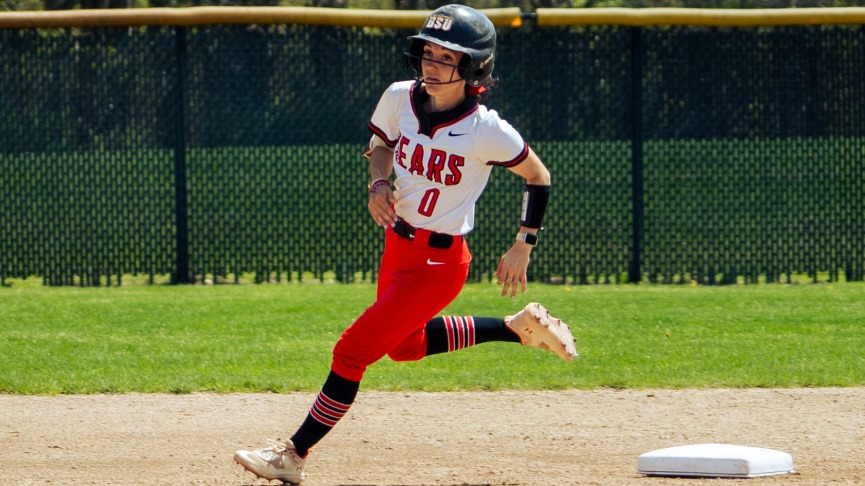
Jim Fenton
BRIDGEWATER, Mass. — The Bridgewater State University softball team ended the regular season in impressive fashion Saturday afternoon.
The Bears swept a Senior Day doubleheader from first-place Westfield State University, 4-2 and 5-1, after the Owls had won nine straight games.
BSU secured the No. 4 seed in the upcoming Massachusetts State Collegiate Athletic Conference tournament and will host a opening round game against fifth-seeded Salem State University on Tuesday afternoon at three o’clock.
The Bears are 19-17 and have won seven of their last eight games. BSU went 8-6 in the MASCAC.
Westfield State falls to 31-9 and is the No. 1 seed with an 11-3 record. Prior to Saturday, the Owls’ lone MASCAC loss was to Worcester State University on April 4.
It was just the second time Westfield State was swept this season with Western New England taking two games on April 10.
BSU received strong pitching in the opener from sophomore Olivia Hargreaves (Weare, N.H.) and in the second game from senior McKayla Cusack (West Haven, Conn.) to defeat the Owls twice.
Game One: Bridgewater State 4, Westfield State 2
Hargreaves pitched a five-hitter and allowed solo runs in the second and sixth innings.
She improved to 7-5, striking out five. Hargreaves had a three-hitter going into the sixth inning when she gave up the final two hits. She then retired the side in order in the seventh.
BSU took a 2-0 lead in the first on a two-out, two-run single up the middle by senior Amelia Blake (Raynham, Mass.), who scored sophomore Makayla Ansell (Menifee, Calif.), who had singled, and sophomore Sydney Schaefer (Swarthmore, Pa.), who had doubled to left-center.
Westfield State got its first run in the second on a two-out homer to left by senior Sarah Bingham (Reno, Nev.). Bingham set the Owls’ all-time program mark with her 17th career home run.
The Bears went up, 4-1, in the fifth when Ansell singled up the middle and scored on an error after a bunt single by junior Angelina Lynch (Taunton, Mass.). Schaefer followed with an RBI double to left.
Westfield State scored in the sixth on an RBI double to right by junior Hannah Wodecki (Southampton, Mass.).
Schaefer and Blake were 2-for-3 while Ansell was 2-for-4 for BSU. Senior Katherine Canty (Natick, Mass.) fell to 12-3 for the Owls, allowing four runs and nine hits with five strikeouts.
Game Two: Bridgewater State 5, Westfield State 1
Cusack is now 8-6 after scattering eight hits and striking out two. She allowed just a first-inning run to Westfield State.
BSU fell behind when sophomore Kassidy LaTour (Lebanon, Conn.) had a two-out RBI single to score graduate student Christina Ciampa (Rockville, Conn.), who had singled to lead off the first.
BSU went ahead in the bottom of the inning, 2-1, on an RBI double to left-center by Schaefer and an RBI single up the middle by Blake. The double marked Schaefer’s 17th double of the season, one shy of the Bears’ single-season mark of 18 set by Dawn Harrington in 1993.
Ansell homered to left field to lead off the third, making it 3-1. It was her second homer of the season.
BSU finished the scoring with two runs in the fifth.
Ansell reached on a two-base error and scored on a double down the left-field line by Lynch. An infield hit by senior Riley Fitzgerald (Swansea, Mass.) scored Lynch.
Blake and senior Emily Marcotte (North Dighton, Mass.) went 2-for-3 for the Bears, who had eight hits.
Sophomore Joss Mettey (Easthampton, Mass.) gave up two runs in two innings and took the loss, falling to 8-2. Three pitchers tossed two innings apiece for the Owls in game two.
Four BSU seniors were honored in festivities. The group included Marcotte, Fitzgerald, Cusack and Blake.
NIL
Trump Weighs NIL Executive Order After Meeting With Nick Saban in Alabama
President Donald Trump is reportedly considering an executive order regulating Name, Image, and Likeness (NIL) compensation in college athletics. This move could inject new federal scrutiny into an already fragmented system. The idea emerged after Trump met with former Alabama Crimson Tide football coach Nick Saban during his recent visit to Tuscaloosa, where he delivered […]
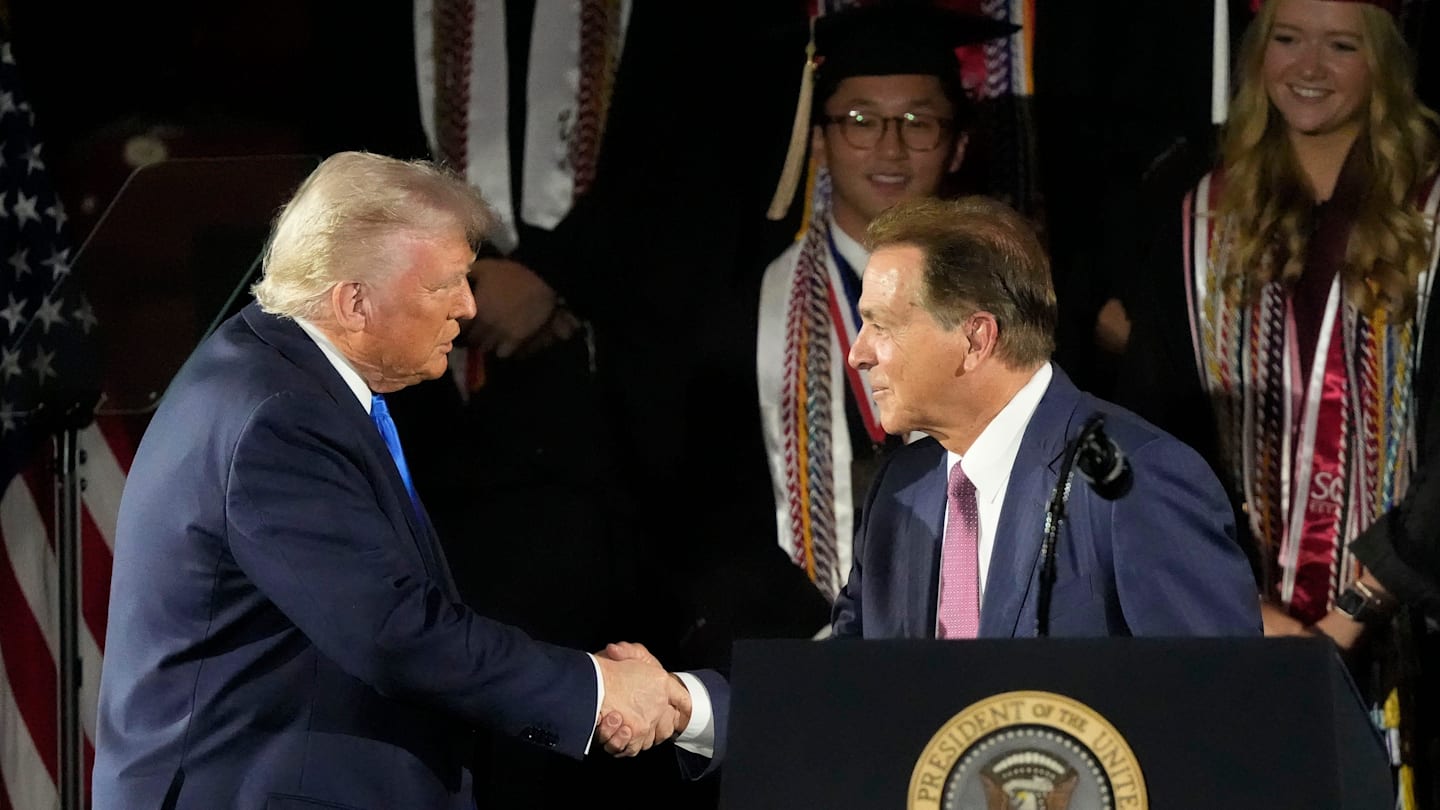
President Donald Trump is reportedly considering an executive order regulating Name, Image, and Likeness (NIL) compensation in college athletics. This move could inject new federal scrutiny into an already fragmented system.
The idea emerged after Trump met with former Alabama Crimson Tide football coach Nick Saban during his recent visit to Tuscaloosa, where he delivered the University of Alabama’s commencement address. Saban reportedly voiced his concerns about the current NIL landscape, describing it as chaotic and detrimental to the competitive balance of college sports. Trump agreed, instructing aides to explore what a potential executive order might look like.
While the details remain vague, any federal mandate on NIL would come at a volatile time for the NCAA and its member institutions. The landmark House v. NCAA settlement, which proposes $2.8 billion in back pay and allows schools to compensate athletes directly under a structured revenue-sharing model, is still awaiting final approval. Judge Claudia Wilken has delayed that decision, demanding changes to how roster limits would be phased in, arguing the current language could harm athletes currently on scholarship.
Amid this uncertainty, states are scrambling to get ahead. Arkansas recently passed a law exempting NIL earnings from state taxes, and Georgia and Alabama have floated similar legislation. These piecemeal approaches create regulatory disparities—some schools can promise recruits a better tax deal or more protected contracts, while others remain bound by stricter rules. Without federal intervention, the gap is likely to widen.
But what exactly would an executive order accomplish? Unlike legislation, executive orders cannot override state laws or judicial decisions, and future administrations can easily overturn them. They also lack the full force of Congressional regulation. However, such an order could set federal standards around contract transparency, disclosure, and oversight, curbing the more extreme state-level incentives that risk distorting recruiting and undermining athlete protections.
The NCAA has long called for a unified federal framework, arguing that operating within a fragmented system, where each state crafts its own NIL rules, is increasingly complex. Even in exploratory stages, a federal executive order signals that the issue is reaching new levels of national importance.
Whether or not President Trump follows through with an executive order, his engagement brings NIL reform squarely into the spotlight at the highest levels of government. As legal cases remain unresolved and states continue passing their laws, the future of college athletics hinges on courtrooms and campuses and the Oval Office.
-

 College Sports3 weeks ago
College Sports3 weeks agoFormer South Carolina center Nick Pringle commits to Arkansas basketball, John Calipari
-
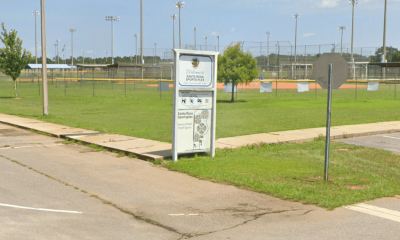
 Rec Sports1 week ago
Rec Sports1 week agoDeputies investigating incident that caused panic at Pace youth sports complex
-
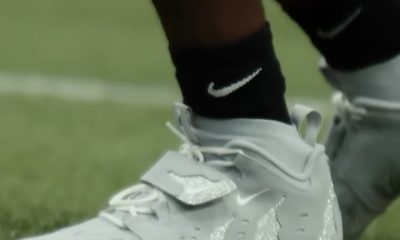
 Fashion1 week ago
Fashion1 week agoThis is poetry in motion.
-

 High School Sports1 week ago
High School Sports1 week agoAppling County football to forfeit all 10 wins from 2024
-
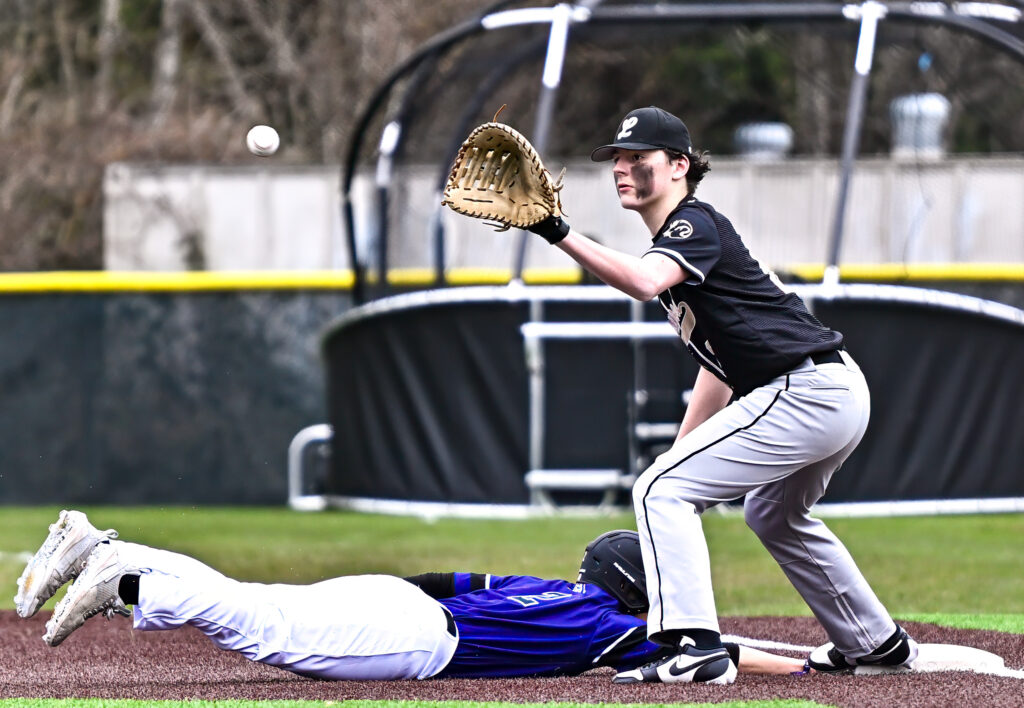
 Sports3 weeks ago
Sports3 weeks agoSports Roundup
-
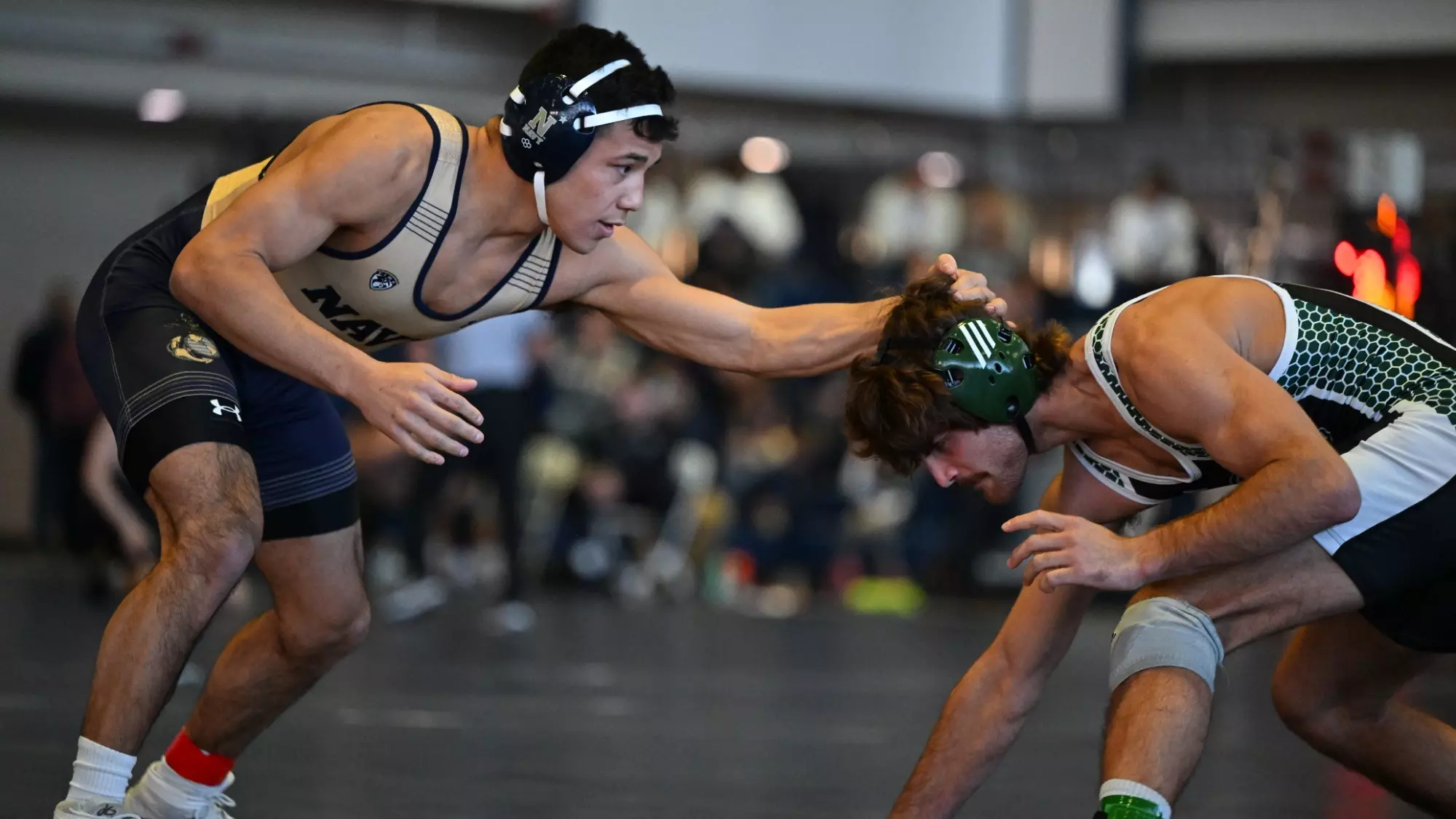
 College Sports1 week ago
College Sports1 week agoLehigh wrestlers prepare for wrestling U.S. Open
-

 NIL2 weeks ago
NIL2 weeks agoPatriots Legend Rob Gronkowski Makes Surprising Career Move
-

 NIL1 week ago
NIL1 week agoSave Like a Pro: NIL money isn’t free cash—taxes take a bite! Set aside part of …
-

 Fashion2 weeks ago
Fashion2 weeks agoWatch Saudi Arabian GP free live stream
-

 Sports1 week ago
Sports1 week agoHow to watch Yahoo Sports' NFL Draft Live show













 | SVPod
| SVPod



